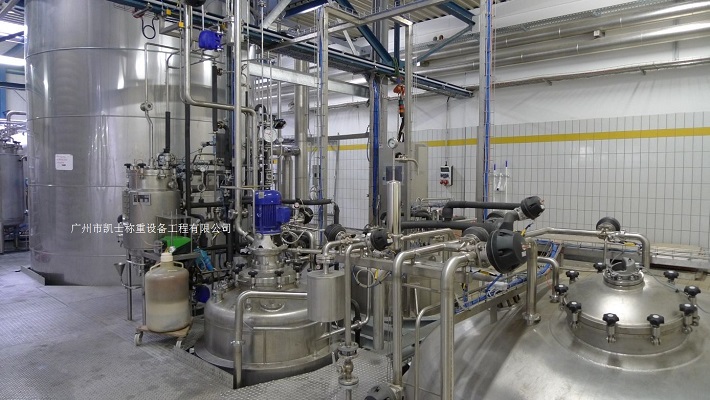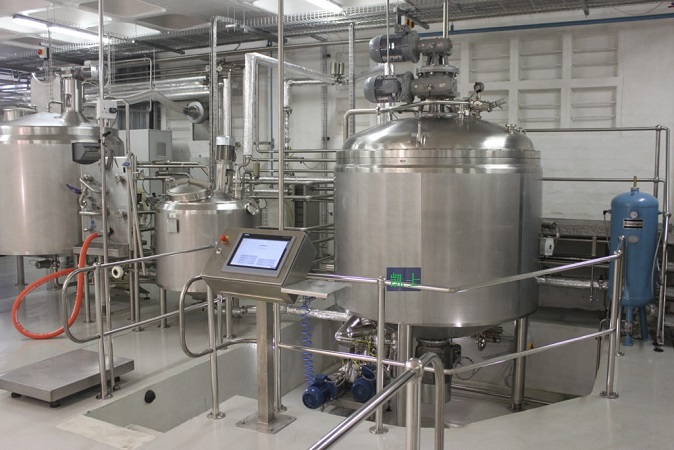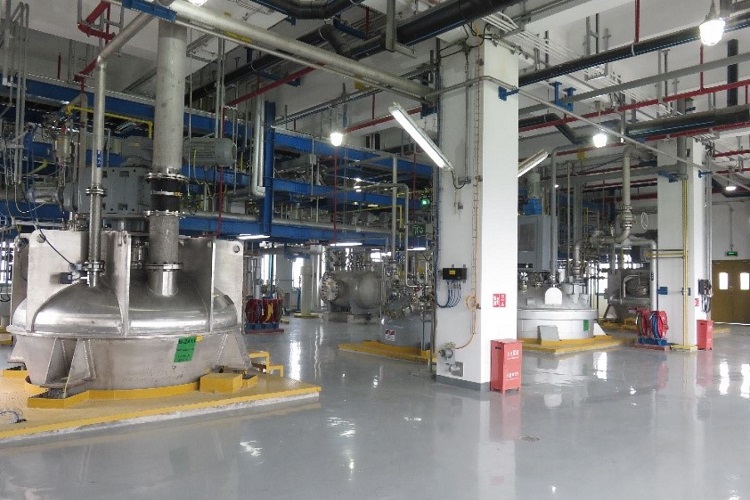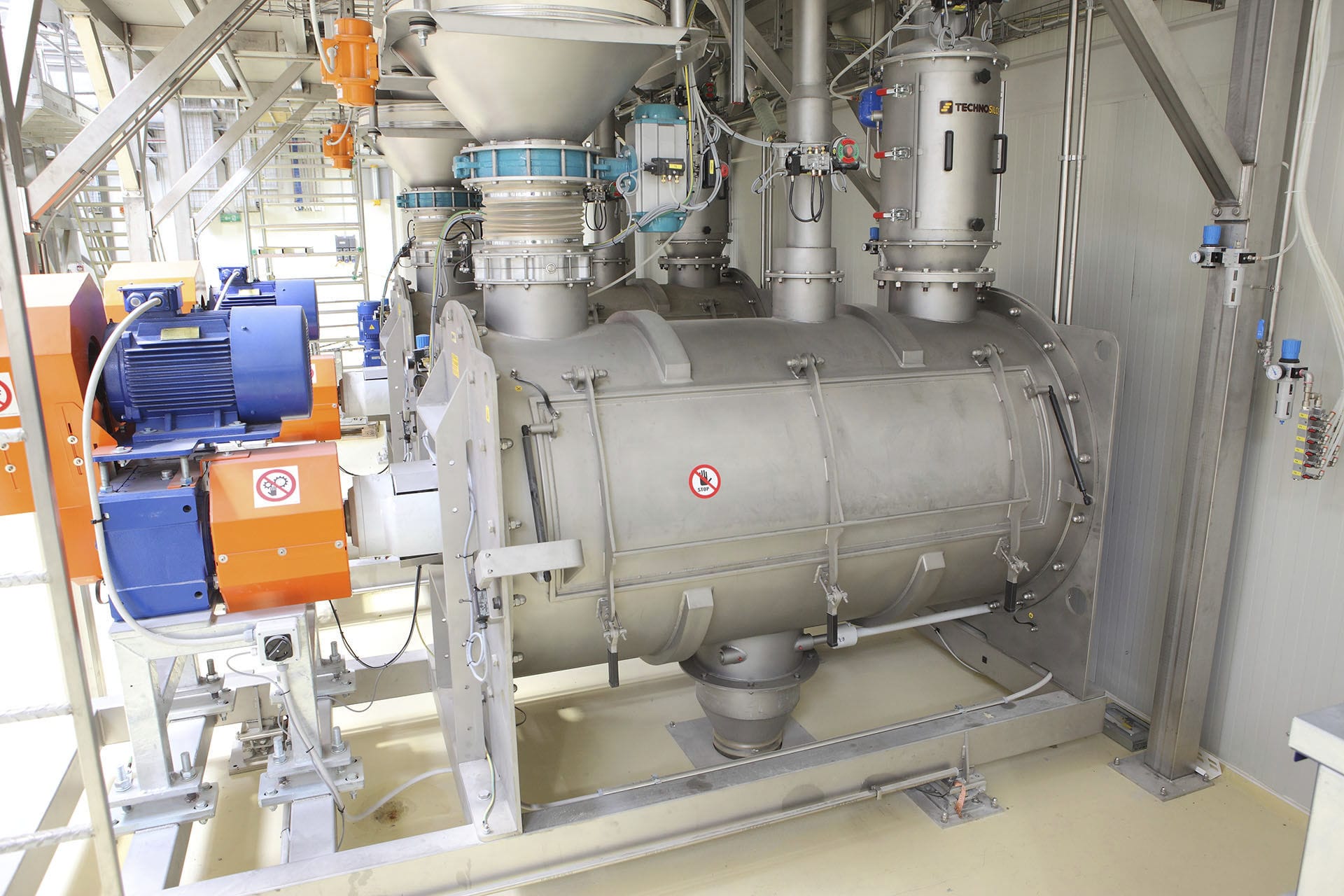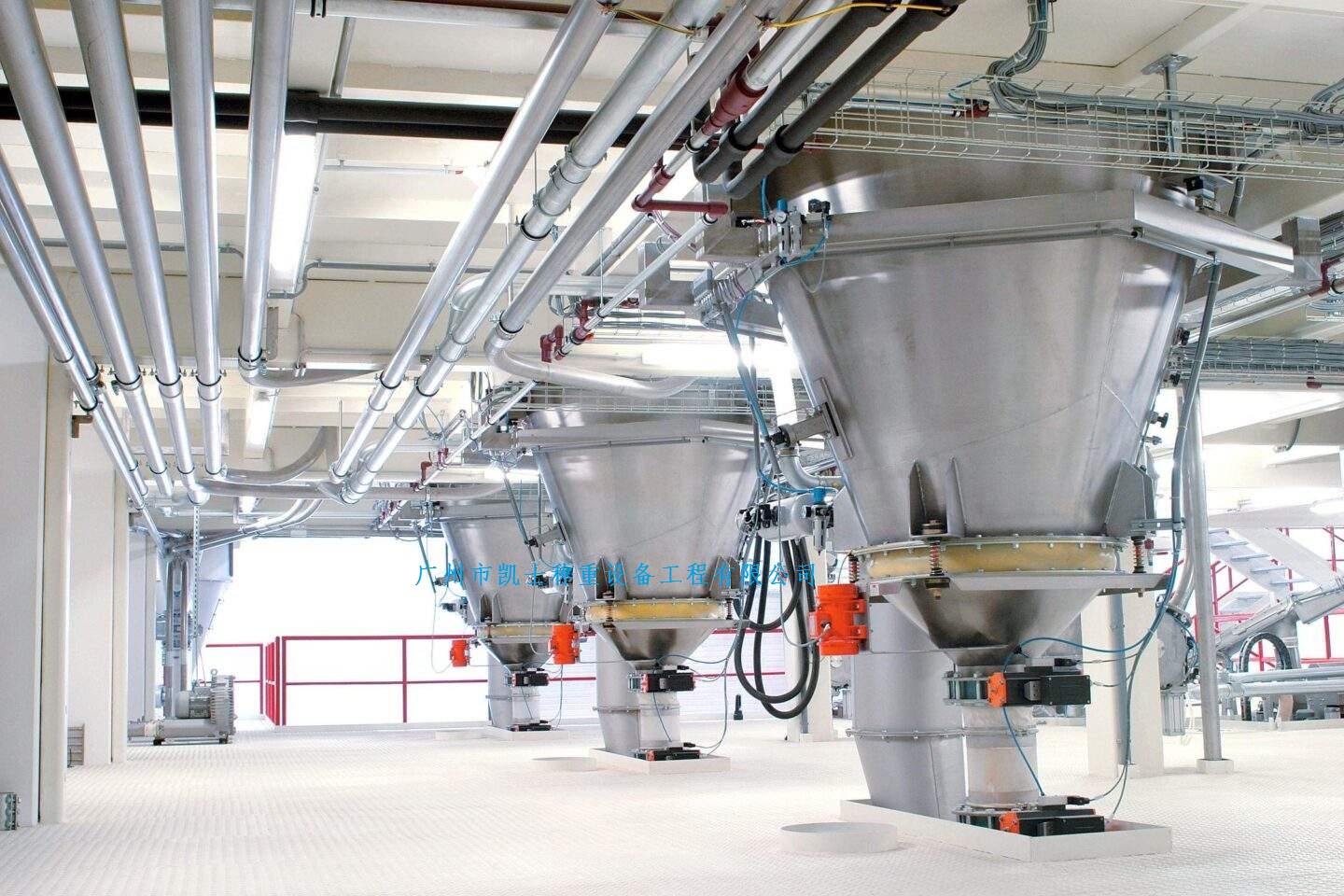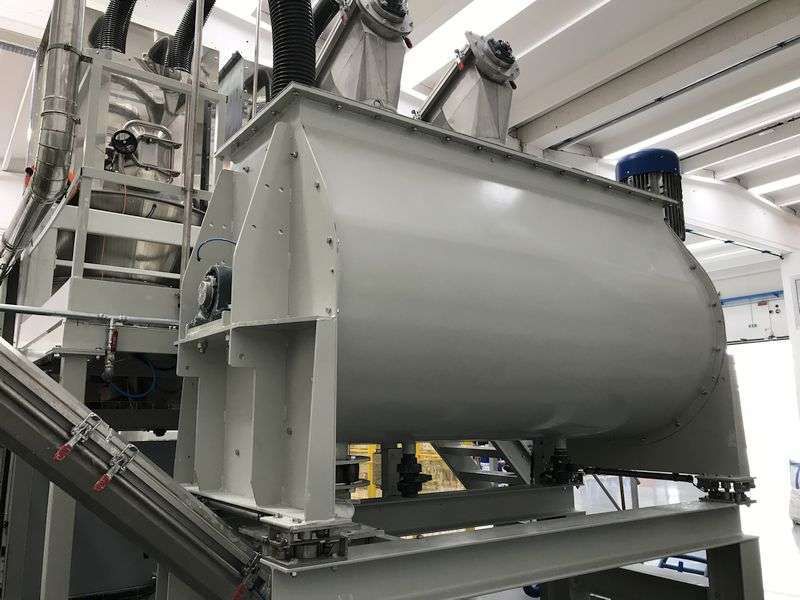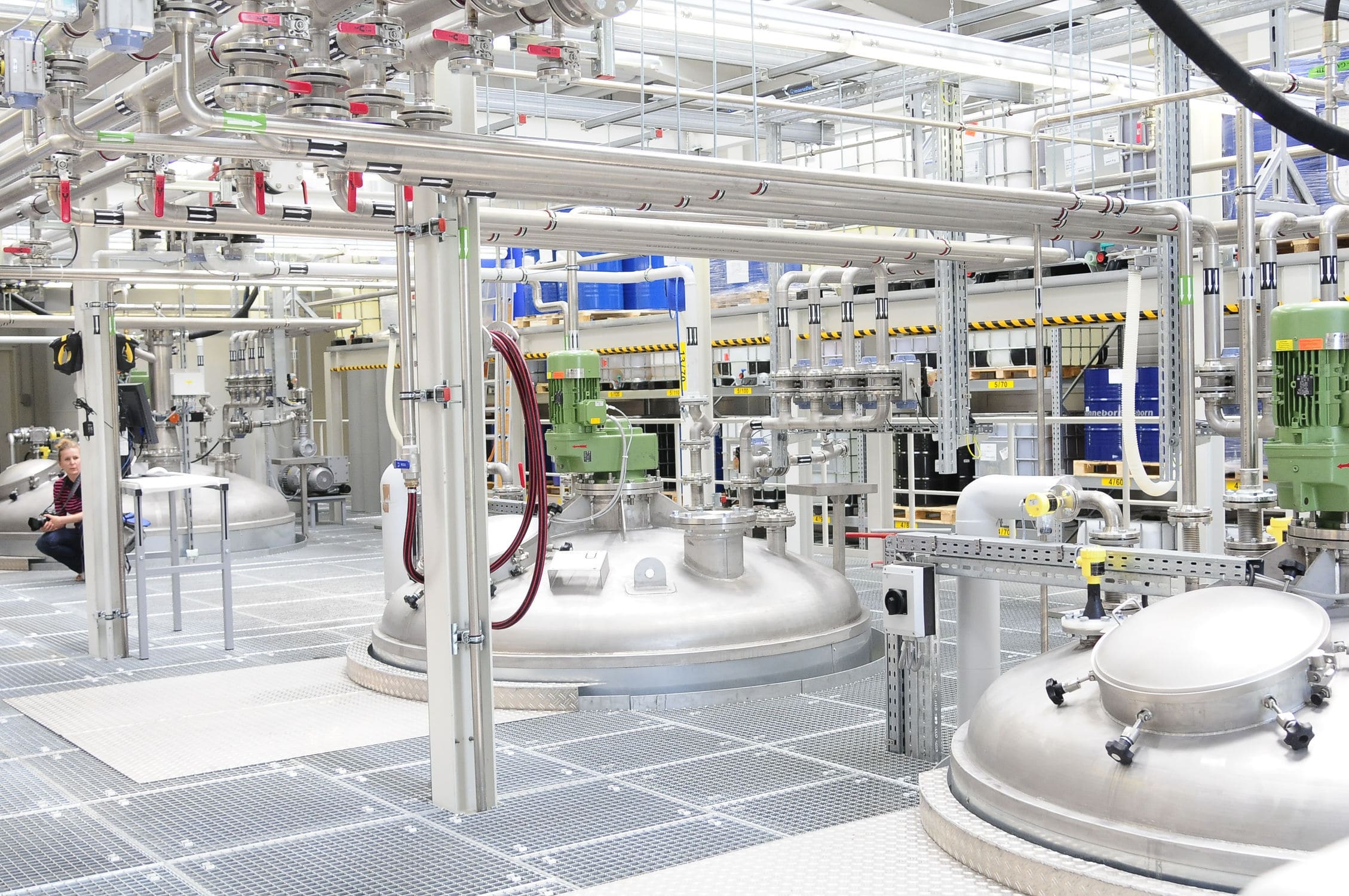

 2020.01.15
2020.01.15Summary:PLC performs closed-loop control on the weighing process of ingredients in high silos, and implements automatic correction of weighing parameters and compensation of weighing errors through software.
High silo batching of raw materials for the silo requires accurate weighing and reasonable proportion, but in the case of high-speed loading, due to the instability of the material flow and mechanical inertia caused by the pure hysteresis there is an overshoot, to the control of the accuracy of the control has brought great difficulties. And because of the open-loop weighing of its error generation is unidirectional, cumulative frequency weighing, the accumulation of error is very considerable, directly affecting the bin control and dosing costs, for which this system is designed as a control method, the application of PLC closed-loop control of the weighing process, through the software implementation of the automatic correction of the weighing parameters and weighing error compensation, one according to the most each time to weigh the error value of the adjustment of the next The first is to adjust the next weighing full control value according to the error value generated by each weighing, i.e. to stop the feeding equipment in advance, so that the actual loading most close to the set weight as much as possible to reduce the error generated by each weighing, and the second is to correct the target value of the next weighing according to the error value generated by each weighing to compensate the weighing error.
1 weighing process control algorithm design
(1) Each time before the preparation of material automatically calculate the planned preparation weight W and material full control value.
Before each preparation of the weighing hopper, according to the set weight of the hopper (this value is calculated by the head of the high silo according to the dosing process and input into the PLC in the form of a bill of materials), and the weight that needs to be compensated for the last weighing error (the algorithm is automatically calculated by the PLC), the weight of the planned preparation of the material is calculated.
In order to reduce loading deviations caused by mechanical inertia and residual vibration of the feeding equipment, the PLC must stop the feeding equipment by sending a full signal in advance, which is sent when the weight of the weighing hopper reaches the full control value W. Only in this way can ensure that the weighing error is minimized.
(2) Each time the weighing hopper is emptied, the actual net loading amount and loading deviation are automatically calculated.
When the weighing hopper is full of material, the preparation process ends. When the feeding program selects the hopper to be discharged, the weighing funnel gate is opened to discharge the material and the electronic weighing weight is automatically tracked. When the hopper is empty, the empty signal is issued and the weighing funnel gate is closed. At the end of the discharging process, the weight of the residual hanging material in the electronic scale, i.e. the empty weighing weight of the weighing hopper, is measured and expressed. When the weighing hopper is full of material, the full weighing weight of the weighing hopper can be measured. Therefore, the net loading weight and loading deviation can be calculated.
(3) Automatic optimization of the next full material advance.
In order to reduce the magnitude of error compensation, the key is to choose the appropriate material full of advance, so that the error generated by each weighing as small as possible. At the end of a weighing, the loading deviation can be calculated, and the loading deviation can be used to correct the next material fullness advance amount of each material. If the deviation exceeds the normal allowable range due to accidental non-normal factors, then the previous advance will still be used as the next advance.
In actual production, depending on different equipment, different varieties and different, can be set manually. In this way, you can use this loading deviation to correct the next material preparation full of material in advance, in order to more reasonable and accurate calculation of the material full of control values, so that the actual amount of material loaded close to the planned amount of material loaded. The following formula is the formula for calculating the material full advance.
The larger the value of the correction coefficient, the faster the speed of correction, but too large is prone to oscillation phenomenon; the smaller the value of the correction speed is slower. The size of the value of the correction factor with the size of the particles of raw materials, feeding speed, feeding equipment, the amount of residual vibration of the material, the size of the impact of the material. If the raw material particles are large, fast feeding speed, impact force, the value of appropriate to take some small, and vice versa to take the value of slightly larger. Generally take the value between 60 ~ 90%, depending on the different types of materials slightly different.
(4) automatic calculation of the next compensation amount
In each hopper weighing hopper empty, after the end of loading, automatically calculate the accumulated error, according to the accumulated error to calculate the next compensation amount. The principle is that the accumulated error of this weighing should be compensated from the next weighing as much as possible. But a compensation amount is too large, may exceed the hopper weighing the permissible limit of loading capacity, and in the process is not allowed, encountered such a situation, the first according to the maximum amount of compensation (can be manually pre-agreed value), and the rest (called the value of the undercompensated) from the subsequent weighing of the scale by weighing to compensate for the return.
In summary, the error formed by various factors, through the above compensation and control measures, will be able to achieve the required weighing accuracy. The cumulative amount of weighing error formed after several times of loading is equal to the cumulative weighing error of the last scale.
Therefore, as the number of weighing times increases, the total weighing error will not accumulate more and more. Through the continuous optimization of the material full of advance, accurate calculation of the loading control value, so that each time the weighing deviation is reduced to a minimum, the error generated in a timely manner to be compensated for, so as to achieve the purpose of automatic weighing compensation to ensure the accuracy of continuous weighing.
2 weighing process PLC software program implementation
When the hopper is in the empty material state, through the weighing instrumentation issued by the zero signal and after judging the hopper discharge gate to determine in the closed state, through the PLC control vibrating screen or electromagnetic feeder to open the hopper feeding (at the same time, the corresponding equipment at the same time action, such as belts, etc.) When the material reaches the pre-set value, the PLC control to stop feeding. When the hopper is in the full value state, according to the program control instructions, if you need the material, through the PLC control to open the gate, and at the same time to start the material delivery system, to the intermediate warehouse feeding, when the material empty state, the gate closes to feed the stop working.
Weighing process according to the process order can be divided into the preparation process and discharge process, here are the two processes of the program design for an introduction.
(1) Preparation process
Preparation for the start of the process conditions: weighing hopper has been emptied and the gate has been closed (end of the discharge process). In accordance with the algorithm to calculate the weight of the planned material preparation and full control value, and then issued to start feeding equipment command, feeding equipment work, the bin of raw materials continuously loaded into the weighing hopper, when the weighing hopper weighs the most to reach or exceed the full control value, the program issued a "full" signal. Stop feeding equipment work, delay a few seconds, and so the feeding equipment to stop and after vibration down the material is complete, the weight of the weighing hopper at this time read into the weighing hopper full weight register, the end of the preparation process. Program block diagram shown in Figure 1.
(2) Discharge process
Preparation process has ended, the weighing bucket full weighing, feeding equipment has stopped working, according to the feeding program execution turn to the weighing bucket discharge, the program issued to open the weighing bucket gate command, drive the external control circuit to open the gate, the weighing bucket of raw materials through the gate directly or through the transport belt loaded into the feeding trolley, the weight of the weighing bucket continuous decline. When the weight of the weighing hopper reaches or is lower than the empty control value (this control value is a constant, set manually and entered into the PLC register), the program sends out the "empty" signal, delayed for a few seconds, close the weighing hopper gate. At this time, the weighing hopper has been released empty material, the weight of the weighing hopper that is, the weight of the empty weighing, and then, in accordance with the aforementioned algorithm to calculate the next full of material in advance, the accumulation of error: and the next compensation.
3 Conclusion
Through the design of PLC software program, to realize the feeding system weighing compensation process improvement, with practical application of practical significance.


















